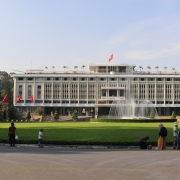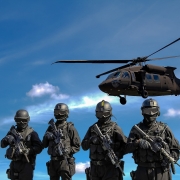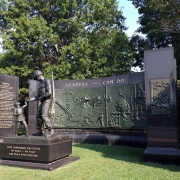What was Détente?
Topic of Study [For H2 and H1 History Students]:
Paper 1: Understanding the Cold War (1945-1991)
Section A: Source-based Case Study
Theme I Chapter 3: End of Bipolarity
The Détente
Détente refers to the easing of strained relations between USA and the Soviet Union. Following the disastrous October Crisis of 1962, US President Richard Nixon assumed a more diplomatic stance to avert a potential nuclear catastrophe. The Nixon administration offered to promote greater dialogue with the Soviet government.
1. Moscow Summit of 1972
Following the unexpected trip to Beijing in February, President Nixon met the Soviet leader Leonid Brezhnev in Moscow in May 1972. The Summit led to several milestone achievements.
First, both parties agreed to cooperate on the Apollo–Soyuz Test Project, which signaled the end of the “Space Race”. Additionally, the two leaders signed two nuclear arms control agreements: The Strategic Arms Limitation Talks (SALT I) treaty and the Anti-Ballistic Missile Treaty (ABMT).
The SALT I treaty was significant as it froze the number of strategic ballistic missile launchers to halt further arms build-up. On the other hand, the ABMT limited each of the two parties to 100 anti-ballistic missiles.
2. Washington Summit of 1973
A year later, Soviet leader Leonid Brezhnev and Chairman of the Council of Ministers of the Soviet Union Alexei Kosygin made a trip to Washington for another summit in June 1973. Similar to the previous meeting, it was hailed as a turning point in superpower relations, given that both parties agreed to sign the Agreement on the Prevention of Nuclear War.
In essence, this agreement signified both superpowers’ willingness to exercise restraint and prevent the threat of a nuclear war.
Guided by the objectives of strengthening world peace and international security, Conscious that nuclear war would have devastating consequences for mankind,
Proceeding from the desire to bring about conditions in which the danger of an outbreak of nuclear war anywhere in the world would be reduced and ultimately eliminated, Proceeding from their obligations under the Charter of the United Nations regarding the maintenance of peace, refraining from the threat or use of force, and the avoidance of war, and in conformity with the agreements to which either Party has subscribed,
Agreement on the Prevention of Nuclear War, 22 June 1973
3. Vladivostok Summit of 1974
The third meeting was known as the Vladivostok Summit, which took place in November 1974. The summit was conducted as an extension of arms control provisions between the superpowers. The American President Gerald Ford traveled to Vladivostok to sign the agreement, which restricted the number of inter-continental ballistic missiles (ICBMs) and submarine-launched ballistic missiles (SLBMs).
4. Helsinki Accords (1975)
Lastly, the Helsinki Accords were introduced during the Conference on Security and Co-Operation in Europe in July 1975. Also, known as the Helsinki Final Act, it was a diplomatic agreement that revealed mutual efforts to ease tensions between the Soviet and Western blocs.
Soviet Union was in favour of the Accords as it sought recognition of its post-war hegemony in eastern Europe. For example, the Soviet government insisted on the rightful existence of East Germany as well as Poland’s western border. Through this, USSR would then be recognised as a Great Power.
In return, USA requested USSR to recognise the respect for human rights, freedom of information across borders and the expansion of contacts between the eastern and western parts of Europe.
Was Détente sustainable?
Although the above-mentioned agreements made it appear as if the superpower tensions were no longer present, tensions resurfaced in the late 1970s. Following the signing of the SALT II treaty in 1979, Soviet Union invaded Afghanistan in December 1979.
This unexpected move resulted in open and harsh criticisms by the West. In response, US President Jimmy Carter requested the increase in the defense budget and financed the anti-Soviet Mujahideen fighters to counter the Soviet occupation.
Eventually, the electoral victory of the Presidential candidate Ronald Reagan accelerated the end of the Détente, ushering the age known as the “Second Cold War”.
What can we learn from this article?
Consider the following question:
– How far do you agree that the end of the Détente was inevitable? [to be discussed in class]
Now that you have covered the major events that shaped the superpower relations in the 1970s, you should attempt some source-based case study questions to apply what you have learnt. Why not join our JC History Tuition as we provide you with bite-sized and exam-friendly study notes, additional essay and SBCS practice questions as well as outline references.
The H2 and H1 History Tuition feature online discussion and writing practices to enhance your knowledge application skills. Get useful study notes and clarify your doubts on the subject with the tutor. You can also follow our Telegram Channel to get useful updates.
We have other JC tuition classes, such as JC Math Tuition and JC Chemistry Tuition. For Secondary Tuition, we provide Secondary English Tuition, Secondary Math tuition, Secondary Chemistry Tuition, Social Studies Tuition, Geography, History Tuition and Secondary Economics Tuition. For Primary Tuition, we have Primary English, Math and Science Tuition. Call 9658 5789 to find out more.











